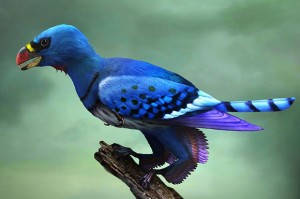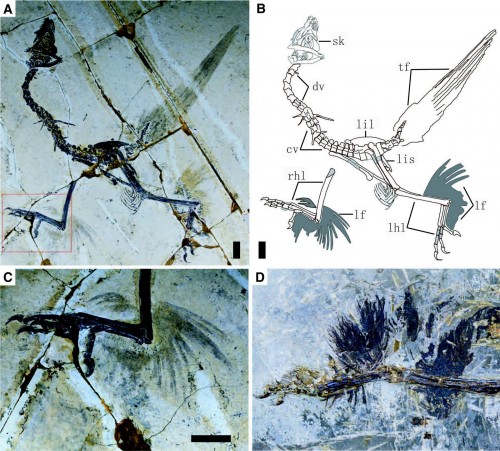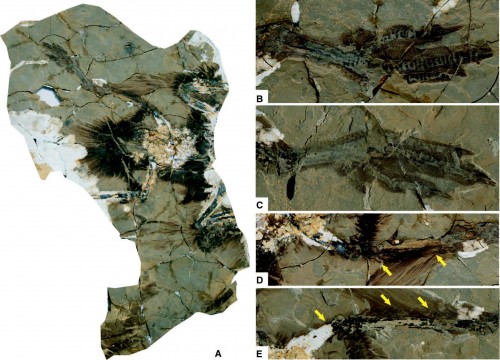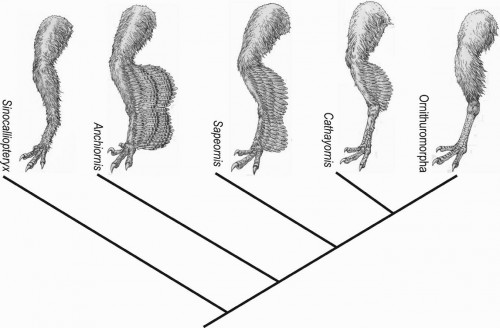
In 1970, John Ostrom of Yale University identified the Archaeopteryx as one of the earliest birds, claiming that this animal once flew like modern birds. Although scientists had been studying fossil birds since 1860, the connections between birds and dinosaurs was not truly understood until Ostrom described this specimen and noted the characteristics it shared with some of the later dinosaurs, such as Deinonychus. However, the most important characteristic that distinguishes birds from non-avian dinosaurs is their ability to fly. While recent fossil specimens support the evolution of feathers in a large portion of non-avian dinosaurs, most early bird specimens are poorly preserved, limiting the amount of information that can be garnered from studying their fossilized feathers. As Stephen Brusatte of the University of Edinburgh told Science, “You really have to squint.”
The recent discovery of eleven well-preserved fossil birds in China may change how we look at the earliest avian ancestors. These fossils suggest that the earliest birds may have flown using four wings instead of two. Found in Liaoning, China, and appearing to be about 100 to 150 million years old, all of the specimens clearly have feathers on both their front and hind limbs. In fact, the morphology of the feathers indicates that they may have played an aerodynamic role. As Brusatte told Science, “[they have] big leg feathers with vanes and the whole shebang.”

The bird specimens come from at least four different basal bird groups, indicating that these hind wings were widespread in early birds, although they did not persist to modern birds. The scientists propose that the characteristic is the ancestral condition of birds. Following further investigation of the specimens and other feathered dinosaur specimens, researcher Xiaoting Zheng and colleagues found that these characteristic leg and foot feathers first arose in dinosaurs, possibly even in coelurosaurians (such as Tyrannosaurus rex). Later on, these distinct feathers disappeared in birds — first from their feet and then from their legs, leaving modern birds with only one set of wings.
However, much less understood is how these hind wings were used by non-avian dinosaurs and early birds. In modern birds, only forelimb feathers function in flight. Modern birds’ legs only function in locomotion, and any leg feathers they have are for protecting or insulating their limbs. David Alexander of the University of Kansas, Lawrence, told Science, “[they] must surely have had some aerodynamic function although whether as stabilizers, steering vanes, or full-blown wings remains to be seen.”

Other scientists disagree. Richard Prum of Yale University proposes that the feathers may have served a different role, such as in courtship displays. Kevin Padian of the University of California, Berkeley, told Science that these feathers may have even made it harder to fly, due to their apparent large surface area.
The scientists behind the discovery have thousands of other specimens, which should help resolve the conundrum.

